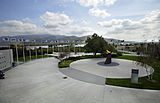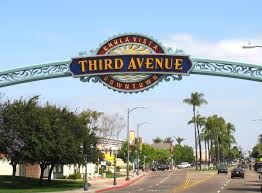Chula Vista
Chula Vista “Spanish for beautiful view” is the second-largest city in the San Diego metropolitan area, the seventh largest city in Southern California, the fifteenth largest city in the state of California, and the 75th-largest city in the United States.
History
Fossils of aquatic life, in the form of a belemnitida from the Jurassic, have been found within the modern borders of Chula Vista. It is not until the Oligocene epoch that land life fossils have been found; although Eocene epoch fossils have been found in nearby Bonita. It is not until 10,000 years ago that human activity has been found within the modern borders of Chula Vista, primarily in Otay Valley of the San Dieguito people. The oldest site of human settlement within the modern boundaries of Chula Vista, was named Otai by the Spanish in 1769, and had been occupied as far back as 7,980 years ago. Another place where humans first settled within the modern boundaries of Chula Vista was at the Rolling Hills Site, which dates back to 7,000 years ago.
In 3000 BCE, people speaking the Yuman (Quechan) language began moving into the region from the Lower Colorado River Valley and southwestern Arizona portions of the Sonoran desert. Later the Kumeyaay tribe came to populate the land, on which the city sits today, and lived in the area for hundreds of years. The Kumeyaay built a village known as Chiap (or Chyap) which was located by mudflats at the southern end of South Bay
Economy
Chula Vista maintains a business atmosphere that encourages growth and development. In the city, the small business sector amounts for the majority of Chula Vista’s business populous. This small business community is attributed to the city’s growth and serves as a stable base for its economic engine.
Geography
Chula Vista is located in the South Bay region of San Diego County, between the foothills of the Jamul and San Ysidro Mountains (including Lower Otay Reservoir) and San Diego Bay on its east and west extremes, and the Sweetwater River and Otay River at its north and south extremes. The geography of Chula Vista is impacted by the La Nacion and Rose Canyon Fault zones; it has moved rocks from Pleistocene and younger eras.Yet, as late as 13,000 years ago, soils in the Rancho del Rey area have been unaffected by fault activity.



